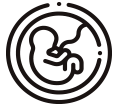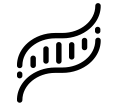Periodontal Pathogens
Molecular study to identify the main periodontal pathogenic bacteria responsible for periodontal disease in the gingival sulcus. Finding out the bacterial load allows a strategy of individual therapy to be carried out with the minimum use of antibiotics.

Which patients is it most useful for?
For people with chronic or refractory periodontal disease.
- Sample: Crevicular fluid
- Volume: 5 paper points
- Storage of sample: 5+/-3oC (Away from light)
- Turnaround time: 7 working days
(May vary)
Benefits

Helps the clinician establish a more accurate diagnosis and follow-up.
Allows the clinician to assess the need to establish the right treatment with antibiotics adjuvant to periodontal treatment.
What information does it provide?
The PCR-hybridisation technique is used to analyse:
- 5 most harmful pathogens: Aggregatibacter actinomycetemcomitans (Aa), Porphyromonas gingivalis (Pg), Prevotella intermedia (Pi), Tannerella forsythensis (Tf) and Treponema denticola (Td).
- 11 pathogens, which include the 5 harmful and 6 moderate pathogens: Parvimonas micra (Pm), Fusobacterium nucleatum (Fn), Campylobacter rectus (Cr), Eubacterium nodatum (En), Eikenella corrodens (Ec) and Capnocytophaga ssp (Csp).
It allows periodontal bacteria to be identified quickly without the need for a culture, with the aim of providing treatment and follow-up of periodontal disease.





















